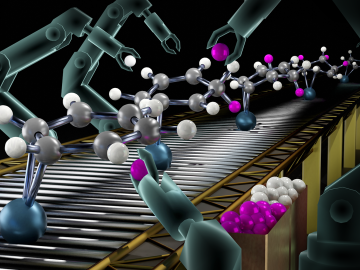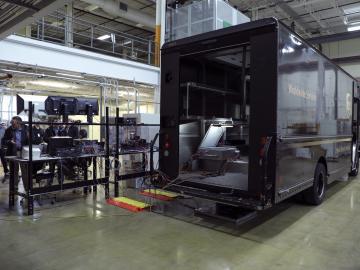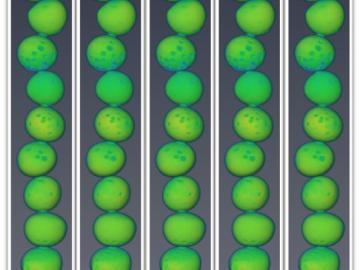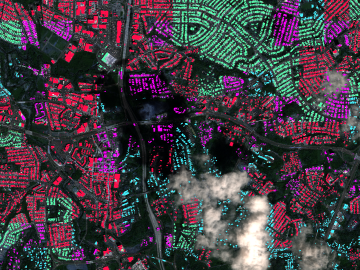
Filter News
Area of Research
- Advanced Manufacturing (3)
- Biological Systems (1)
- Biology and Environment (25)
- Computational Engineering (1)
- Computer Science (1)
- Energy Science (52)
- Fusion Energy (1)
- Materials (15)
- Materials for Computing (2)
- Mathematics (1)
- National Security (2)
- Neutron Science (23)
- Nuclear Science and Technology (4)
- Supercomputing (6)
- Transportation Systems (2)
News Type
News Topics
- (-) Bioenergy (17)
- (-) Clean Water (14)
- (-) Composites (11)
- (-) Environment (48)
- (-) Frontier (1)
- (-) Mercury (3)
- (-) Molten Salt (5)
- (-) Neutron Science (27)
- (-) Security (1)
- (-) Transportation (36)
- 3-D Printing/Advanced Manufacturing (34)
- Advanced Reactors (13)
- Artificial Intelligence (16)
- Big Data (17)
- Biology (21)
- Biomedical (11)
- Biotechnology (4)
- Buildings (21)
- Chemical Sciences (13)
- Computer Science (42)
- Coronavirus (11)
- Critical Materials (12)
- Cybersecurity (3)
- Emergency (1)
- Energy Storage (32)
- Exascale Computing (1)
- Fossil Energy (1)
- Fusion (9)
- Grid (22)
- High-Performance Computing (12)
- Hydropower (6)
- Irradiation (2)
- Isotopes (5)
- ITER (3)
- Machine Learning (14)
- Materials (36)
- Materials Science (34)
- Mathematics (3)
- Microscopy (11)
- Nanotechnology (12)
- National Security (3)
- Nuclear Energy (19)
- Partnerships (2)
- Physics (4)
- Polymers (10)
- Quantum Computing (5)
- Quantum Science (11)
- Simulation (9)
- Space Exploration (10)
- Statistics (1)
- Summit (8)
Media Contacts

Researchers at Oak Ridge National Laboratory developed a method that uses machine learning to predict seasonal fire risk in Africa, where half of the world’s wildfire-related carbon emissions originate.

Scientists have found a new method to strategically add deuterium to benzene, an aromatic compound commonly found in crude oil. When applied to the active ingredient of drugs to incorporate deuterium, it could dramatically improve the drugs’ efficacy and safety and even introduce new medicines.

A multi-institutional research team found that changing environmental conditions are affecting forests around the globe, leading to increasing tree death and uncertainty about the ability of forests to recover.
An international team of scientists found that rules governing plant growth hold true even at the edges of the world in the Arctic tundra.

Oak Ridge National Laboratory researchers have developed a thin film, highly conductive solid-state electrolyte made of a polymer and ceramic-based composite for lithium metal batteries.

Researchers at Oak Ridge National Laboratory demonstrated a 20-kilowatt bi-directional wireless charging system on a UPS plug-in hybrid electric delivery truck, advancing the technology to a larger class of vehicles and enabling a new energy storage method for fleet owners and their facilities.

In the 1960s, Oak Ridge National Laboratory's four-year Molten Salt Reactor Experiment tested the viability of liquid fuel reactors for commercial power generation. Results from that historic experiment recently became the basis for the first-ever molten salt reactor benchmark.

Oak Ridge National Laboratory researchers working on neutron imaging capabilities for nuclear materials have developed a process for seeing the inside of uranium particles – without cutting them open.

A novel approach developed by scientists at ORNL can scan massive datasets of large-scale satellite images to more accurately map infrastructure – such as buildings and roads – in hours versus days.

The prospect of simulating a fusion plasma is a step closer to reality thanks to a new computational tool developed by scientists in fusion physics, computer science and mathematics at ORNL.


